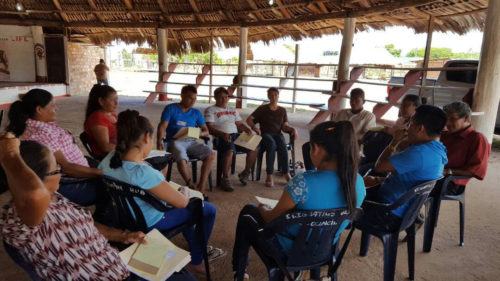Even as hinterland communities face challenges in the quest to transform their agricultural initiatives into profitable business ventures, the Ministry of Agriculture has stated that the Guyana Marketing Corporation (GMC) in collaboration with the Canada-backed Promotion of Regional Opportunities for Produce through Enterprises and Linkages and the Inter-American Institute for Cooperation in Agriculture has completed a Cost-of-Production Workshop at St Ignatius Village that targeted farmers and agro-processors in Region Nine.
The ministry said the exercise was aimed at better equipping farmers and agro-processors with knowledge that would enable them to identify and compute input costs for their farming or agro-processing initiatives and was intended as a follow-up to a fact-finding mission undertaken in November by the GMC after flawed management decisions contributed to underperformance in some hinterland agricultural projects.

The focus on equipping farmers in Region Nine with the knowledge that would enable sounder business and technical decisions comes against the backdrop of what Chief Executive Officer of the National Agricultural and Extension Institute Dr Oudho Homenauth told Stabroek Business in two separate interviews earlier would be an enhanced focus on hinterland agriculture as part of a wider emphasis on local self-sufficiency and on pressing a stronger case for greater external market access for farm and agro-processed products.
According to the Ministry of Agriculture, 47 participants from the villages of St Ignatius, Parshana, Moco-Moco, Shulinab, Quarrie, Nappi, Bina Hill, Surama, Aranaputa and Annai benefited from the training exercise which focused on measuring production costs for peanuts, cassava bread, pepper sauce, plantain chips and guava jam. The release said the model utilised during the workshop sessions will enable application in the calculation of costs of production for other agricultural produce.
The Ministry of Agriculture quoted General Manager of the GMC Ida Sealey-Adams as saying that the benefits of the exercise are not “limited to being in a better position to negotiate prices offered to them for their produce.”
Sealey-Adams reportedly further asserted that “GMC is cognizant of the importance of developing and expanding agriculture business enterprises” and that “the ability to sustain markets for their commodities” is of paramount importance to the farmers.
There are, however, no publicly pronounced plans to resolve the challenges confronting hinterland farmers as regards moving produce to markets on the coast. These farmers have had to confront the challenges of limited transportation services and high freight costs associated with the movement of their produce to the coast and the consequential high level of spoilage.
Additionally, little has been said about plans to explore possibilities for the acquisition of low-level but efficient technology that would allow for the conversion of agricultural produce into manufactured products that can be then be moved to coastal and regional markets.
Last week, the Guyana Office for Investment told this newspaper that some 20 Brazilian entities were interested in investments in Guyana’s agricultural and agro-processing sectors, among others, and investment arrangements might include the export of the produce back to Brazil.
On a broader scale, the Ministry of Agriculture said in its release that limitations notwithstanding, the GMC, through its Agriculture Business Development Unit, continues to provide training aimed at helping farmers to develop and sustain markets for their produce; train agro processors to enable greater access to existing markets and the opening up of new ones; undertake value chain analyses and develop links among stakeholders in the value chains for agro-processed items and assess marketing opportunities and target markets for agricultural produce.





